How to Repair EFI Bootloader in Windows 10/11?
Q: How to repair the EFI bootloader in Windows 10/11?
"Hey, a few days ago, I tried to install a Windows 10/11 in EFI mode. I installed it on a hard disk. But now, the bootloader shows to be missing or corrupted. How can I fix it?"
Computer systems are inevitable for us to run our daily tasks in diverse areas of applications. EFI Bootloader files are available across PCs and laptops. They are subject to Unified Extensible Firmware Interface, which initiates the boot loader process by booting up the OS appropriately. These EFI programs include data that directs the manner at which the boot operations will flow.
Computer systems integrate UEFI to its functionality, thereby serving as a software interface connecting the OS & the device. However, at times the interface shows some annoying booting issues.
This post will outline the procedures to fix a malfunctioning EFI in Windows 10/11. We will check two methods that are Window's automatic repair and inputting repair commands manually.
Part 1: What Is EFI System Partition?
EFI System Partition is nothing but the formation of various sections in a PC, primarily to ensure that it's possible to control data from every single part independently through the OS connected to a computer system.
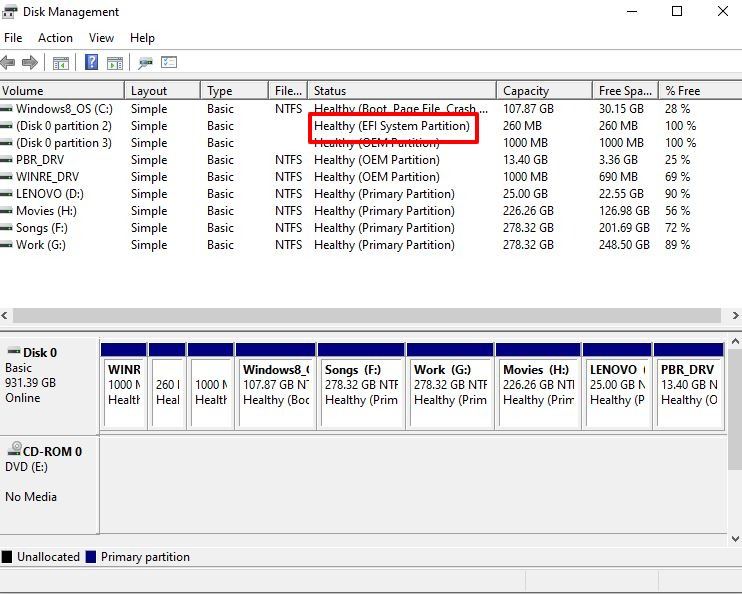
The ESP has four different units; they are as follows;
- Boot loader files for OS
- System utility programs
- The device driver files
- Data files
This particular EFI System Partition exists to make sure that the UEFI tends to boot up the OS & the remaining features available in the device instantly as soon as you boot the computer. EFI boot loader ensures that the essential programs are active and ready for use ahead of the booting.
The approach of ESP also ensures that the system failures often experienced by the operator get sorted out. In an Operating system, the boot loader works as a component that authenticates a complete booting for operators while they turn their PC ON.
Besides, if you delete an ESP system partition, then the device may not work correctly, and the installed system may become unbootable. As a result, the EFI system partition commonly gets secured & locked by Windows operating systems. It prevents any case of unexpected removal of the EFI System Partition. Thus, it is the reason that makes ESP invisible across Windows File Explorer.
Part 2: How to Repair EFI Bootloader in Windows 10/11?
You can find the location of an EFI file in the Boot Order variable. Any computer that has an operating system installed in it will have a boot manager. Many times, you can find the location of this EFI file in a special system partition. Well, this partition doesn't contain a drive letter. Even more, it is sometimes hidden.
So, you are facing issues while booting your device with the help of an EFI boot loader. Well, it is not an arduous task as you could imagine.
Before we begin, make sure that your computer's Motherboard is working fine. Moreover, you should also ensure that it supports UEFI mode. If your computer meets these two primary conditions, then here a quick fix. First of all, go to the search section and type disk management. After that, right-click on the disk that you want to test. Now, if you see a "Convert to MBR" option in the pop-up window, then it's a UEFI mode. So, if your Motherboard is fine and supports this UEFI boot, and also if there are issues with the Boot loader, then you can try the following simple ways to repair it.
Note that we will be using two different methods here. These methods will help you fix the EFI boot errors and repair the EFI boot loader directly.
Method 1: Using an Automatic Boot Repair
It could be the first, and probably, the best method you have for repairing a malfunctioning EFI bootloader in your Windows 10/11. All you have to do is enter into an "Automatic Repair Mode" and following the steps below.
Step 1: Enter the Automatic Repair mode
First of all, start the computer. Now, you need to press the reset button as soon as the boot files start loading.

Step 2: Repeat the process
You should repeat this process a couple of times. During the third time, you will see that Windows itself enters into an "Automatic Repair Mode." Here, it also detects the corrupted bootloader file. Moreover, it makes attempts to repair it automatically.
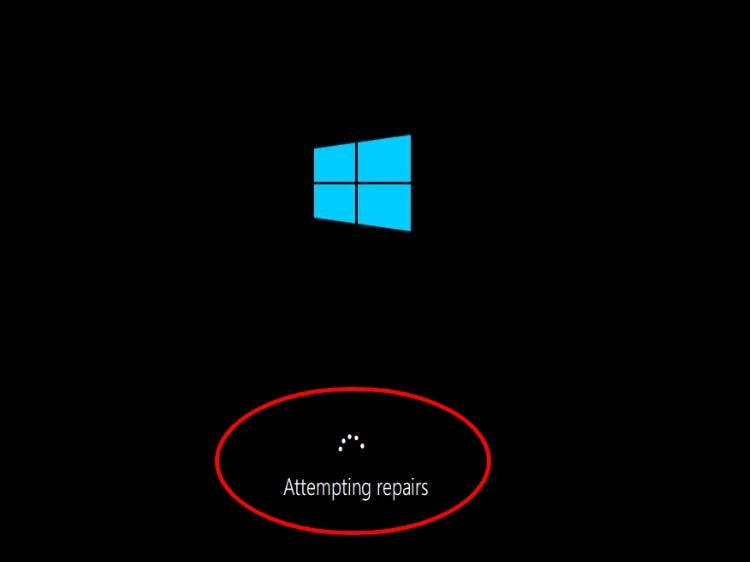
Step 3: Restart your computer
Once your system fixes the bootloader issues, restart the computer. It will activate all the repairs and new settings. Now, your Windows 10/11 PC may work without a flaw.
Method 2: Use the Repair Commands
In case if the automatic repair method doesn't work for you and the issue is still there, then you can try using the repair commands. Here you will open the "Command Prompt" and enter different repair commands to solve the issue.
Step 1: Open the Troubleshoot window
When you open the Automatic repair window, select the "Advanced options" button.
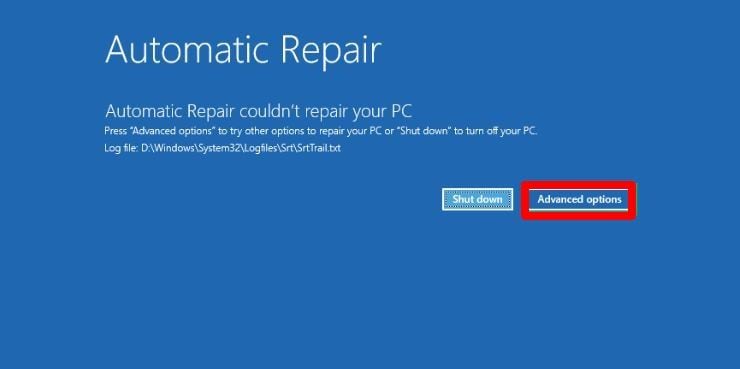
Now, it will open a window where you will get an option to choose the "Troubleshoot" option. Note that, when your Windows cannot automatically repair the bootloader, then it gives an "Advanced Options" button and asks you to give further inputs. Therefore, at this stage, you have two options. You can shut down the PC and try some other method to repair it. Or else, you can use the following methods to troubleshoot it manually.
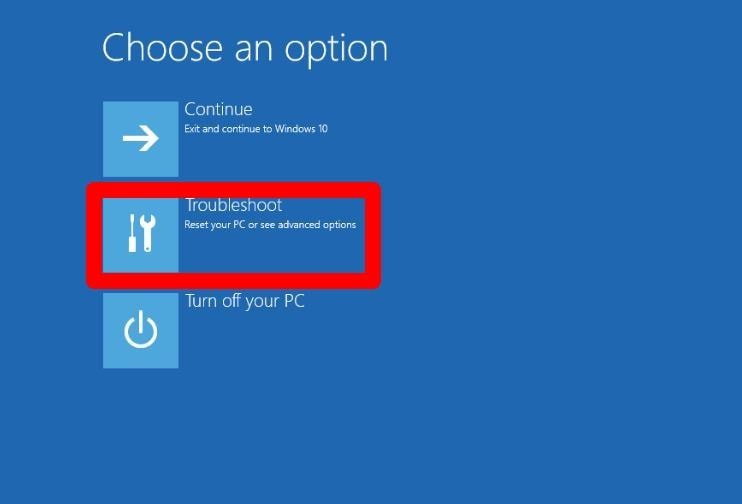
Step 2: Open the Command Prompt window
First of all, select the Advanced options.
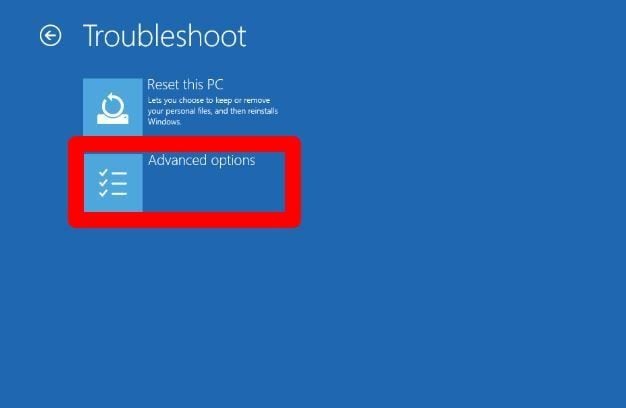
After that, a command prompt option will come. Now, it's time to manually enter commands to fix the EFI bootloader.
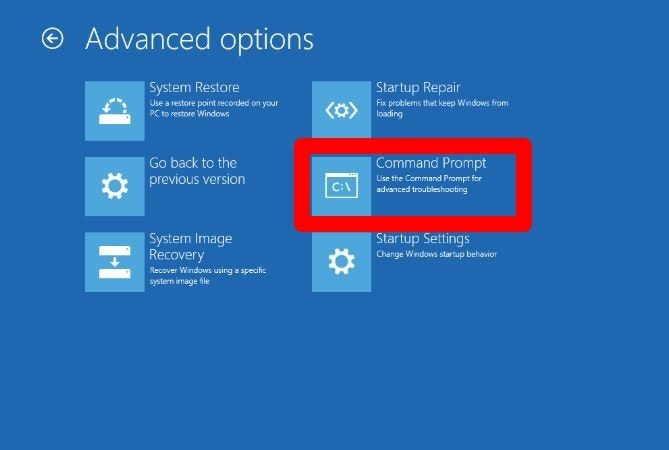
Step 3: Run different commands
In the command prompt window, write BOOTREC/FIXMBR and hit enter. After that, write BOOTREC/FIXBOOT and hit the enter button. If the Master Boot Record (MBR) has issues, then the first command will fix it. Also, during the execution of the BOOTREC/FIXBOOT command, you may come across an error message saying, "Access is Denied." Well, you can fix this error by using another command in the same window.
Step 4: Fixing the error - Access is denied
If you get this error while executing step 3, then use these commands to fix it. Write BOOTSECT /NT60 SYS in the same window and hit enter. Now, once again, write BOOTREC/FIXBOOT and hit the enter button. The first command will update the boot code. Besides, it will also execute the BOOTREC/FIXBOOT command.
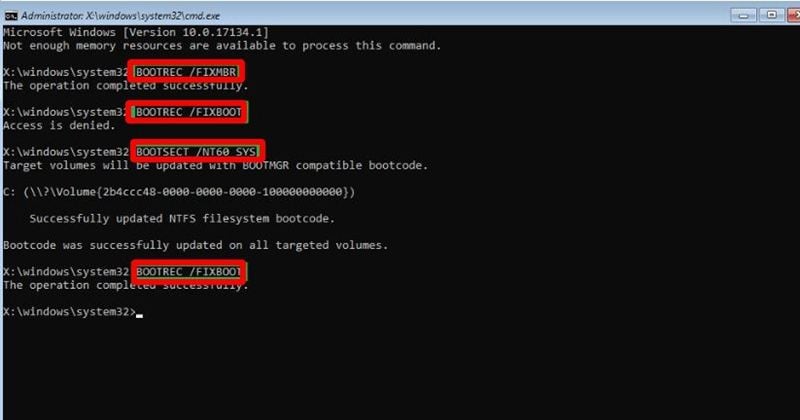
Step 5: Identifying Windows
In this step, we will run the BOOTREC command. For that, write BOOTREC/SCANOS and hit the enter button.
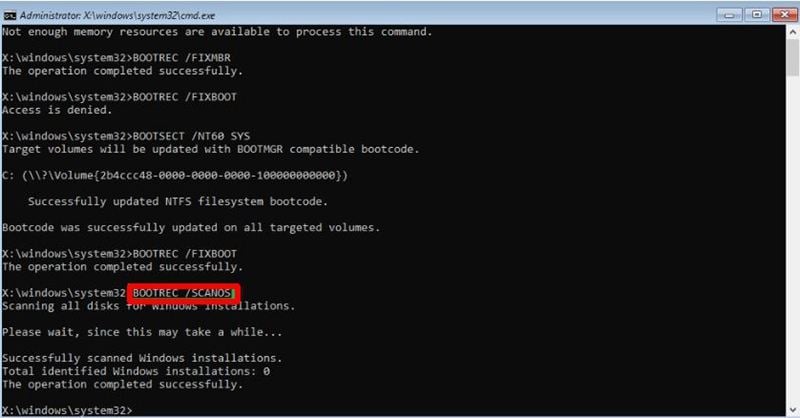
Step 6: Rebuilding the BCD file
Now, it's time to run the REBUILDBCD command. For that, write BOOTREC/REBUILDBCD and hit the enter button. It will rebuild the BCD file and also eliminate the possible issues.
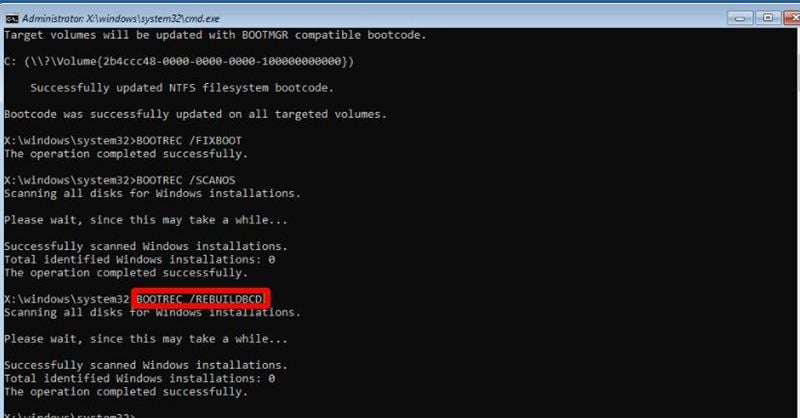
Step 7: Finalizing the fix
You should write "EXIT" and hit the enter button.
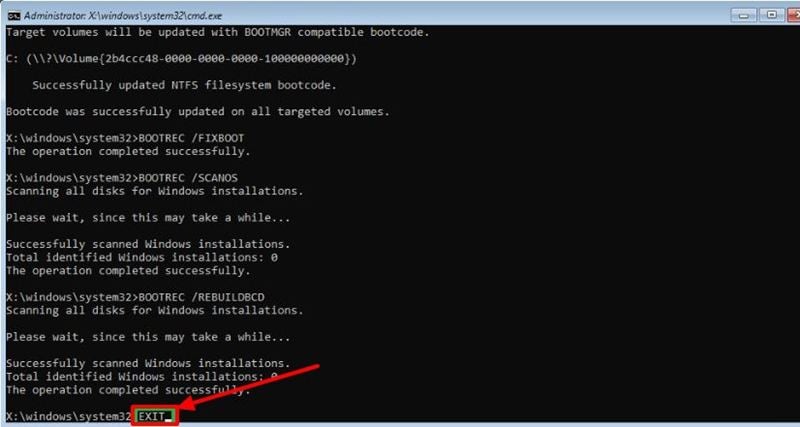
After that, click on the Continue that will appear in the next window. It will finish the process by closing the current window and also restart your computer in a normal mode.
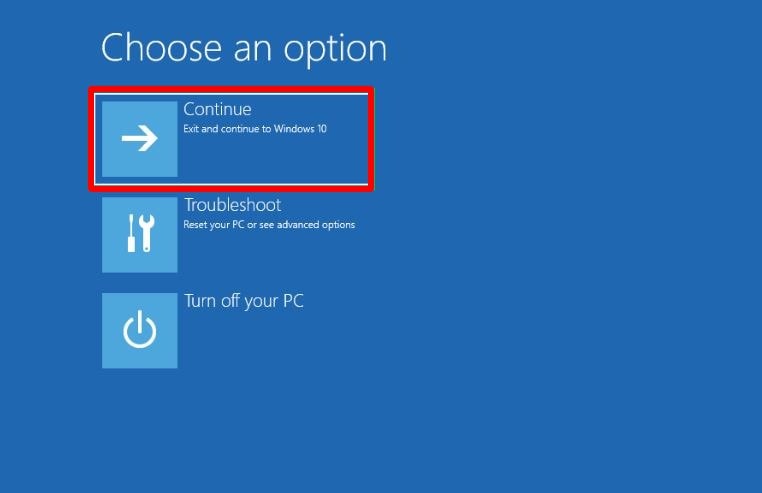
Once it restarts the computer, make sure that you create restore points, take a back up, etc. In this way, you will be able to fix these errors in the future in less time.
Part 3: How to Fix Windows 10/11 Booting Issues?
Sometimes your computer may decline your request to boot up. Moreover, it becomes difficult to trace the cause of any problem when your computer refuses to initialize.
However, there’s no need to lose your confidence if your PC fails to boot up. You have plenty of options to fix your PC before its condition goes beyond any repair. Fortunately, if you have Windows 10/11, then you already have several options to figure out and fix the booting process. You can always avoid booting issues by practicing some easy tricks.
- Open your system in Windows Safe mode
- Test the Battery
- Remove all external devices including USB
- Scan for viruses and other malware
- Make use of Command Prompt window
- Make use of Startup Repair
- Relocate the Drive
Conclusion
In short, repairing the EFI bootloader in Windows 10/11 is an easy process. All you have to do is follow the two solutions given in this post. Remember, if your UEFI becomes corrupted or gets damaged, then it will affect the bootloader and also break them. A broken bootloader further affects your Windows, making it fail to reboot.
Fortunately, you have an option to use either automatic repair or repair commands. Any of these two methods can fix the bootloader issue in Windows 10/11. That’s it, let's expect that your Windows 10/11 starts to work as before.
Partition Recovery
- Partition Management
- Solve Partition Problems
- Partition Tips














 ChatGPT
ChatGPT
 Perplexity
Perplexity
 Google AI Mode
Google AI Mode
 Grok
Grok
























David Darlington
staff Editor